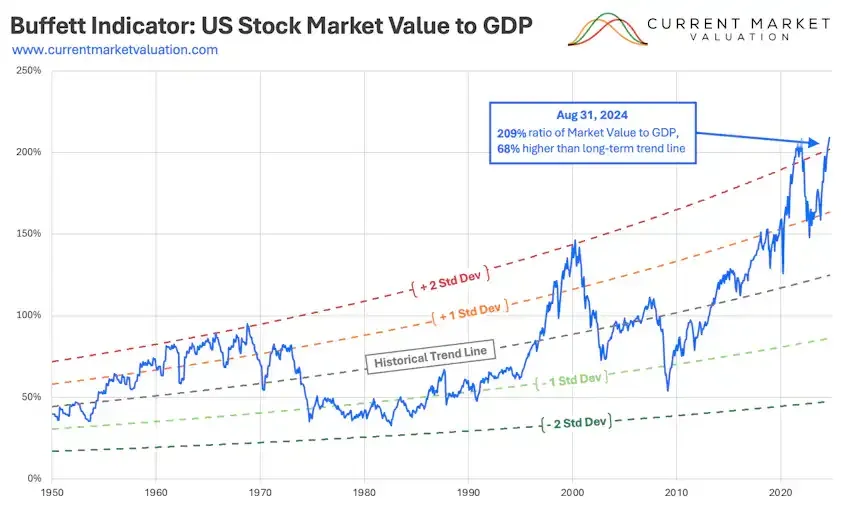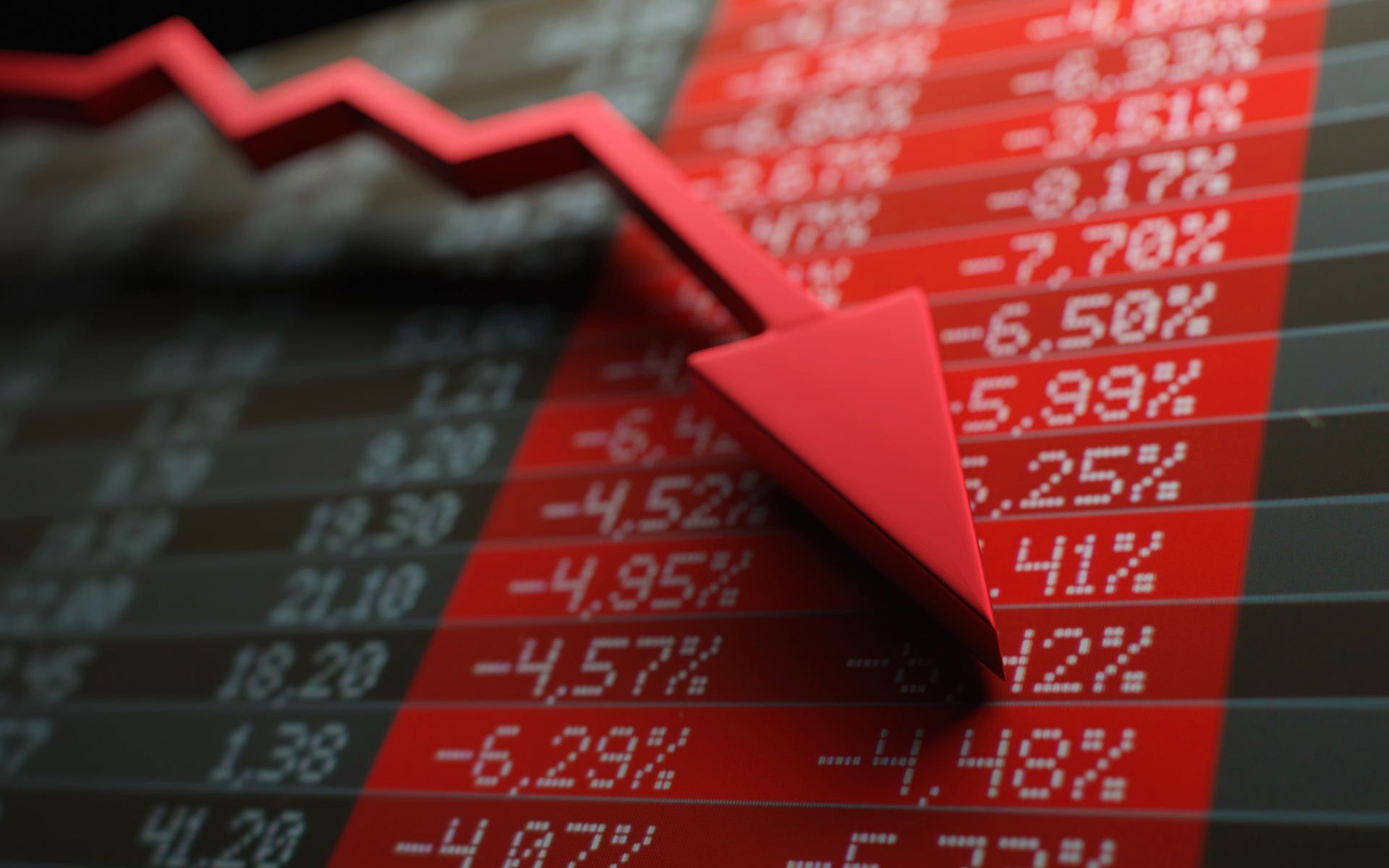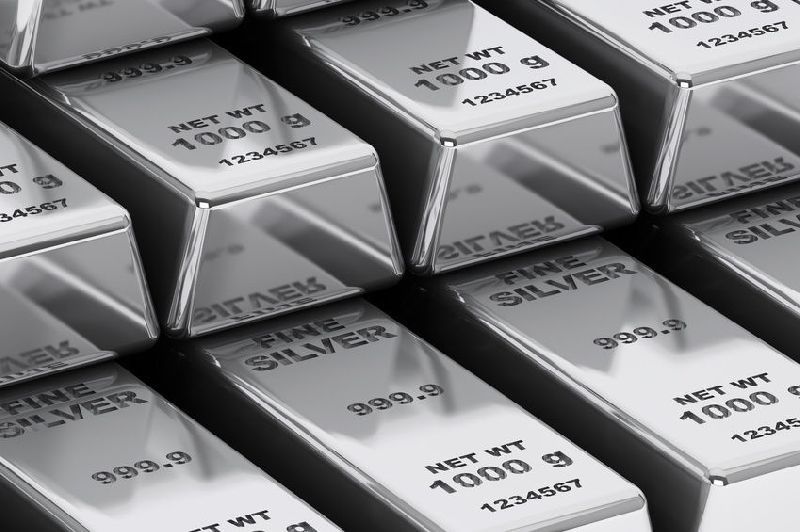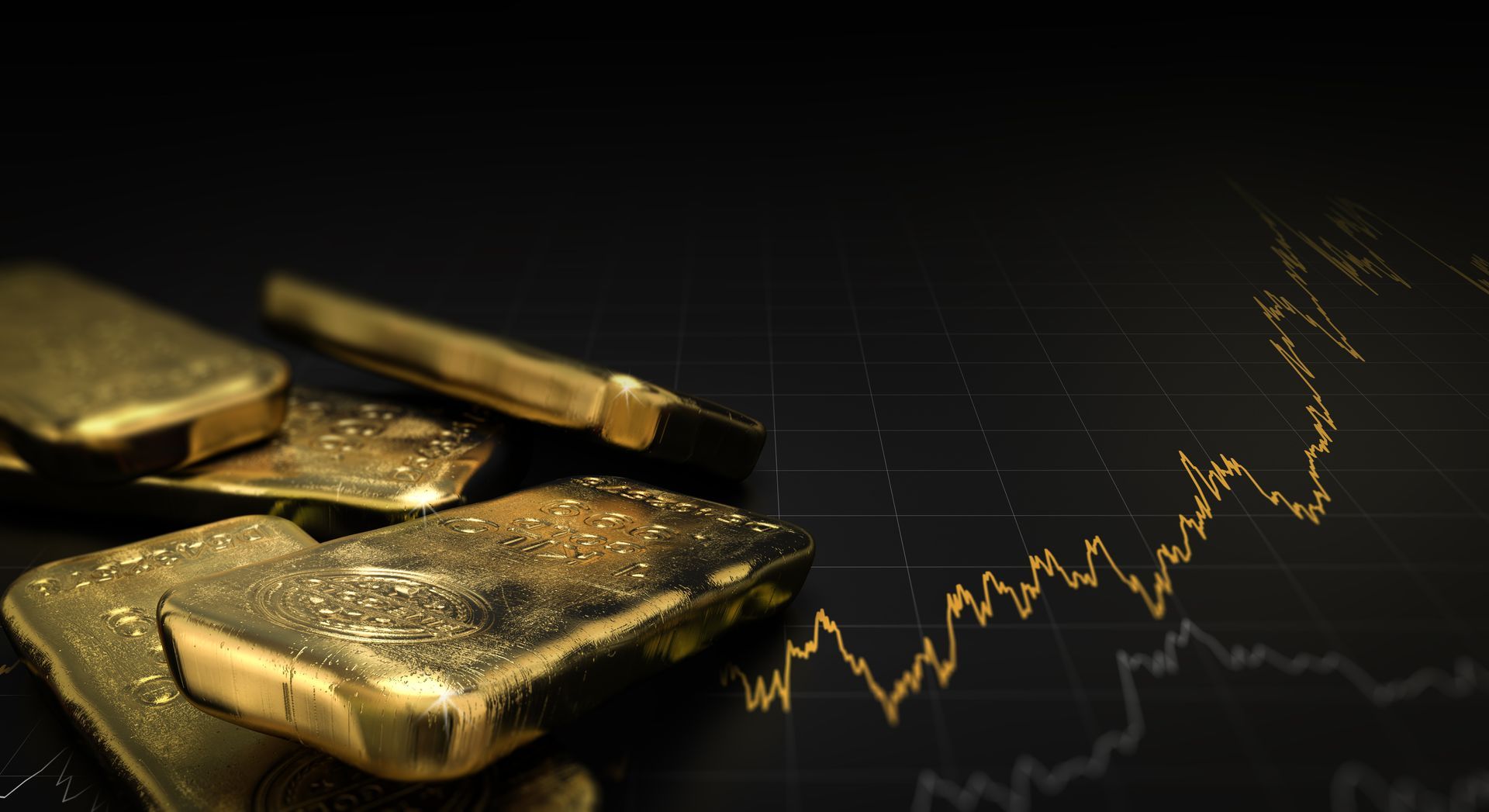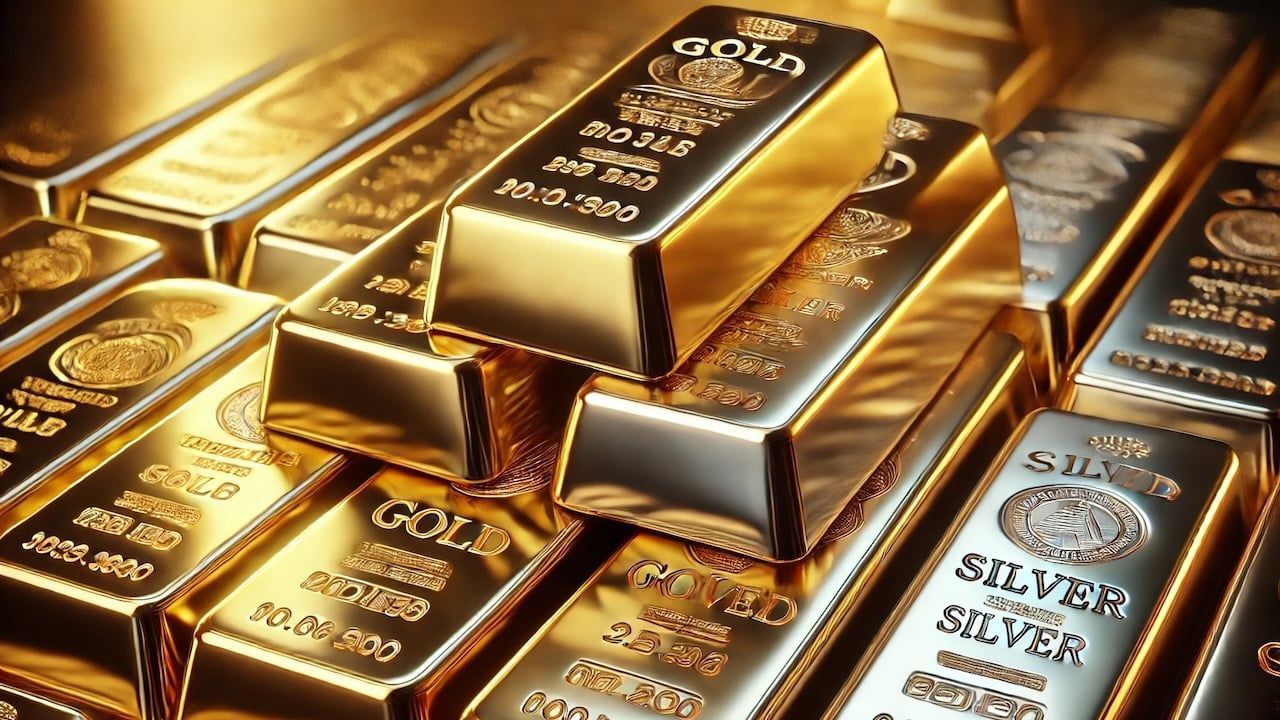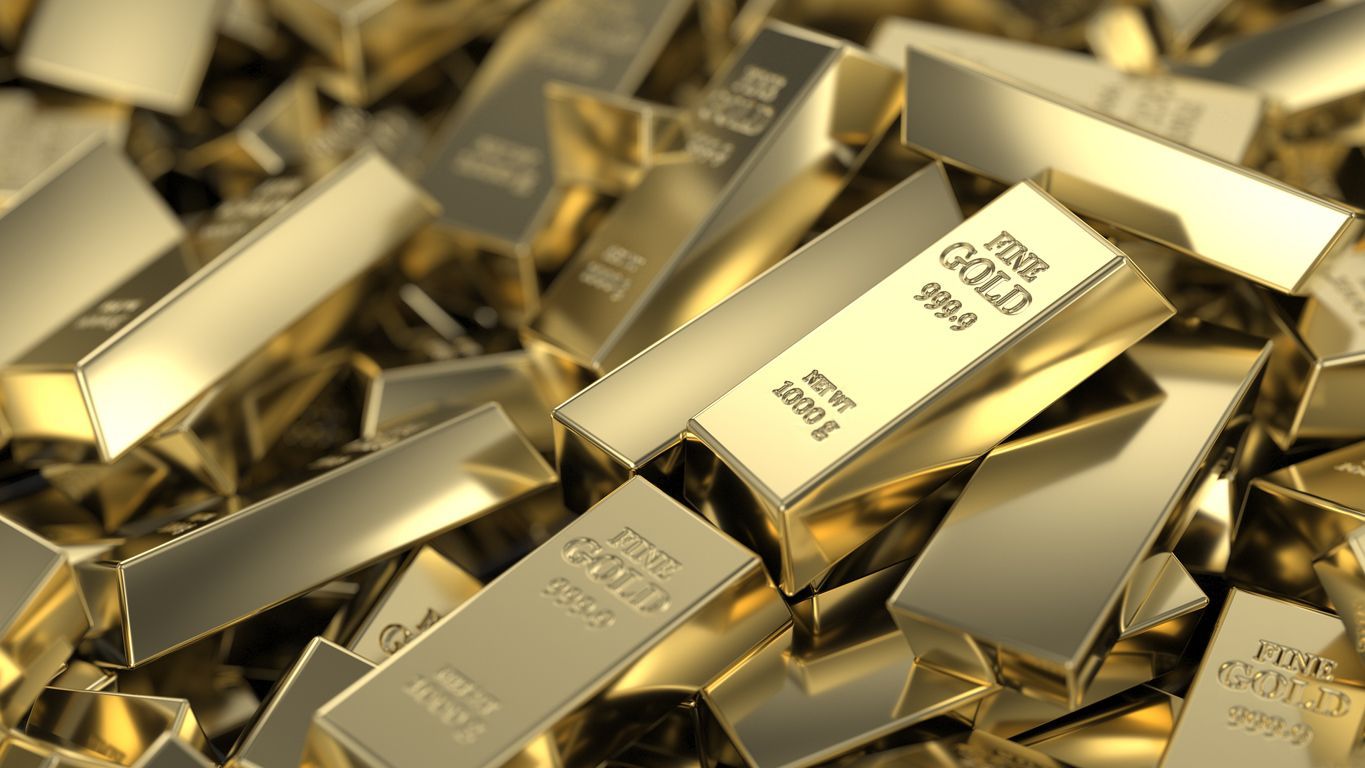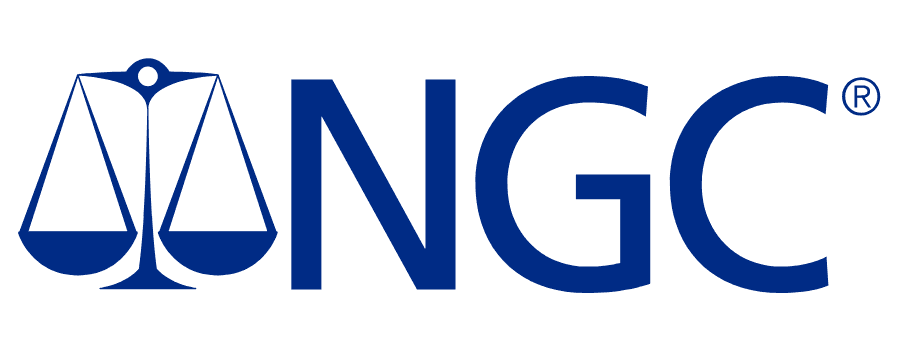BREAKING NEWS
Stay up to date on industry information and news with Red State Gold.
Countries Unite to Combat the Trump Tariffs
China, Japan, and South Korea Unite to Counter U.S. Tariffs: Implications for Precious Metals
In a move aimed at strengthening their economic alliances, China, Japan, and South Korea have united to push back against U.S. tariffs imposed during the Trump administration. This agreement, following a five-year hiatus in their economic dialogue, marks a significant step in the countries’ efforts to enhance regional trade cooperation amid the ongoing trade tensions with the United States (Reuters, 2020).
The trio of Asian economic giants is particularly focused on the semiconductor industry, a vital sector for global supply chains. Japan and South Korea are seeking to import essential semiconductor raw materials from China, while China plans to expand its purchases of finished chips from its neighbors. This shift underscores the growing importance of high-tech industries, with far-reaching implications for global markets, including those that deal in precious metals (South China Morning Post, 2020).
The countries have also committed to discussing export controls and the potential for a free trade agreement, aimed at fostering deeper economic integration in the region. These measures are designed to mitigate the impact of U.S. tariffs and protect their industries. The move signals a collective defense of their economic interests, especially as President Trump is expected to announce additional tariffs (The Diplomat, 2020).
Though the nations face historical and political tensions—such as territorial disputes between Japan and South Korea—shared economic interests have pushed them toward cooperation. Their collaboration could serve as a model for other nations seeking to navigate complex trade dynamics (BBC News, 2020).
For the precious metals industry, the shifting global trade landscape and heightened focus on securing critical resources, such as semiconductors, could have indirect impacts on metal demand. As global trade alliances evolve, keeping an eye on these developments will be crucial for understanding broader economic trends and potential market shifts.
As these countries unite against external pressures, they are not only reshaping regional trade but also setting the stage for a new era of global economic cooperation. This unified approach may have long-lasting effects on international trade policies, which could ultimately influence commodity markets, including precious metals.
Sources:
- Reuters. (2020).
Trade War Impact.
Reuters.
- BBC News. (2020).
U.S.-China Trade Conflict.
BBC.
- South China Morning Post. (2020).
China and Semiconductor Trade.
SCMP.
- The Diplomat. (2020). Regional Cooperation in Asia. The Diplomat.
- The New York Times. (2020).
U.S. Tariffs and Trade Relations.
NY Times.
US Stock Market Dips Days Before Trump's New Tariffs Take Effect
US Stock Market Dips Days Before Trump's New Tariffs Take Effect: What It Means for Precious Metals
The US stock market is experiencing significant turbulence as investors brace for the announcement of President Donald Trump's new round of tariffs, set to be revealed on Wednesday. Dubbed “America's Liberation Day” by the President, these tariffs are poised to have profound consequences not just for the US economy, but for global trade as well.
Global Markets React to US Tariff Concerns
The anticipation of these new tariffs has already shaken global markets. In Asia, Japan’s Nikkei index saw a steep drop of over 4%, while the UK’s FTSE 100 also closed almost 1% lower. These declines reflect widespread anxiety about the potential disruptions caused by the expansion of US tariff policies, which now threaten to include all countries, rather than just those with significant trade imbalances, like China and Mexico (Reuters, 2020).
A Broader Tariff Strategy
Trump's latest tariff announcement signals a dramatic shift in US trade policy. Previously focused on specific nations, the new tariffs are expected to target a wide range of countries, which raises alarms among global trading partners. With economies already stressed from previous tariff rounds, such a broad strategy could trigger further disruptions, affecting everything from manufacturing to consumer prices (BBC News, 2020).
Impact on the UK and Global Trade Relationships
The UK, a key US trading partner, has already expressed concerns about the new tariffs and has not ruled out retaliatory measures. This escalation could lead to a global trade standoff, further complicating the already complex relationship between the US and the UK, especially with Brexit still looming large (The Diplomat, 2020).
What This Means for Precious Metals
As uncertainty grows around the US's economic policies, precious metals such as gold and silver have historically served as safe-haven assets. The market’s volatility, fueled by the fear of global trade disruptions, has led many investors to shift their portfolios toward these metals as a form of protection. With tariffs likely to continue disrupting supply chains and increasing costs for industries, gold and other precious metals could see continued demand in the face of economic uncertainty (Reuters, 2020).
Looking Ahead: The Impact on the Global Economy
The new round of tariffs comes at a time when global supply chains are already under pressure. Industries that rely on international trade, especially those dealing with raw materials like steel and aluminum, have felt the strain of increased costs from previous tariffs. As the new measures take effect, it’s possible that the disruptions will continue to mount, pushing the global economy toward a potential slowdown (South China Morning Post, 2020).
Sources:
- Reuters. (2020).
US Trade War Impact.
Reuters.
- BBC News. (2020).
US Tariff Policy and Global Impact.
BBC.
- The Diplomat. (2020).
US Tariffs and International Reactions.
The Diplomat.
- South China Morning Post. (2020).
US Tariffs and Global Supply Chains.
SCMP.
As we await President Trump’s final tariff decision, markets remain on edge, with investors carefully watching for any shifts that could impact their portfolios. Precious metals, historically a safe-haven investment, are likely to see continued interest as global economic uncertainty persists.
Robert Kiyosaki Predicts Silver Will Outperform Bitcoin in the Coming Months: A New Approach to Building Wealth
Robert Kiyosaki's Bold Prediction: Silver is the Best Investment for Wealth Protection
Renowned author of Rich Dad Poor Dad, Robert Kiyosaki, continues to challenge traditional financial wisdom with his calls for investing in precious metals and cryptocurrency. His latest warning highlights the dangers of saving in fiat currency, which he believes is "fake money" and subject to the erosive effects of inflation. Kiyosaki's message is clear: shift away from fiat currencies and consider real, tangible assets like gold, silver, and Bitcoin for wealth preservation.
Kiyosaki's Longstanding Critique of Fiat Currency
For years, Kiyosaki has been vocal about the flaws of fiat currency. He argues that government-issued money is continuously devalued by central banks through excessive printing, which fuels inflation and diminishes the purchasing power of savings. This, according to Kiyosaki, leads to financial stagnation for individuals who don't invest in assets that can withstand inflation (Forbes, 2020). His advice is simple: don't save "fake money," but instead, invest in assets like gold, silver, and Bitcoin, which have historically preserved and even increased in value.
Why Silver Is Kiyosaki's Top Pick for the Short Term
While Kiyosaki has long been a supporter of both gold and Bitcoin, his most recent focus is on silver. He believes that silver is currently undervalued and will outperform both Bitcoin and gold in the coming months. Kiyosaki predicts that silver could see a significant price surge, with the possibility of reaching $70 per ounce by the end of this year and potentially hitting $200 in the next two years.
Kiyosaki's optimism about silver stems from its industrial demand, particularly in electronics, solar panels, and medical devices. Additionally, silver's relatively low price point compared to gold makes it more accessible for small investors, allowing them to build wealth in a way that gold may not. He urges individuals to act quickly, as he believes the opportunity to invest in silver at current prices won't last long (Business Insider, 2020).
Bitcoin: A Long-Term Investment for Financial Freedom
Despite his enthusiasm for silver, Kiyosaki remains a staunch supporter of Bitcoin. He refers to Bitcoin as "the people’s money" and sees it as essential for protecting wealth against the flaws of fiat currency. Kiyosaki predicts that Bitcoin will continue to rise, potentially reaching $1 million per coin as trust in traditional currencies declines (The Guardian, 2020).
For Kiyosaki, Bitcoin offers financial freedom and a hedge against the traditional banking system. However, unlike Bitcoin, silver offers a more immediate and accessible entry point for new investors looking to secure their financial futures.
Comparing Silver, Bitcoin, and Gold
In terms of recent performance, silver has outpaced both Bitcoin and gold in annual growth. Over the past year, silver has surged by over 37%, compared to Bitcoin's 20% and gold's 36% increase. Silver’s more volatile price movements, while riskier, also provide the potential for higher rewards in a shorter time frame (MarketWatch, 2020).
Kiyosaki's argument is that, at its current price of around $34 per ounce, silver offers a compelling value for those looking to diversify their portfolios. In contrast, gold, priced at over $3,000 per ounce, is less accessible for the average investor.
Kiyosaki’s Call to Action: Invest in Real Assets
Kiyosaki’s financial philosophy is clear: diversify your wealth and protect your future by investing in real assets like gold, silver, and Bitcoin. As inflation continues to erode the value of fiat currencies, these assets serve as a hedge against economic uncertainty, government debt, and central bank policies. His advice is a reminder that in order to secure financial independence, individuals must move beyond traditional savings accounts and government-backed money (Business Insider, 2020).
In conclusion, Kiyosaki’s latest endorsement of silver highlights the importance of taking proactive steps to protect your wealth. As silver, gold, and Bitcoin each offer unique advantages, now may be the right time to reassess your investment strategy and consider diversifying your portfolio with these real, tangible assets.
Sources:
- Forbes, "Why Robert Kiyosaki Believes Gold, Silver, and Bitcoin Are Crucial Investments," 2020
- Business Insider, "Kiyosaki on Silver: Why He Thinks the Metal Will Surge in 2021," 2020
- The Guardian, "Robert Kiyosaki’s Bitcoin Prediction and How It Could Reach $1 Million," 2020
- MarketWatch, "Silver's Recent Performance: A Strong Bet for the Future," 2020
JPMorgan Plans $4 Billion US Gold Delivery Amid Tariff Fears
JPMorgan Chase & Co. will deliver gold bullion valued at more than $4 billion against futures contracts in New York this February. This substantial delivery, amounting to approximately 30 million troy ounces, marks one of the largest on record since 1994. (uk.finance.yahoo.com)
The move is largely driven by escalating concerns over potential import tariffs. President Donald Trump has announced plans to impose a 25% tariff on imports from Mexico and Canada, and a 10% tariff on Chinese goods, effective February 1, 2025. These tariffs are part of a broader strategy to finance extended tax cuts and pressure European nations to increase defense spending. (theguardian.com)
In anticipation of these tariffs, there's been a global rush to ship gold to the U.S. Traders have moved nearly 400 metric tonnes of gold to New York's Comex exchange, increasing its inventory by 75% to 926 tonnes—the highest since August 2022. This surge has led to a shortage in London, with withdrawal times from the Bank of England's vaults extending to four to eight weeks. (ft.com)
The tariffs have also impacted global stock markets. Major indices in the U.S., Europe, and Asia have faced significant declines due to fears of a global trade war. Oil prices have surged, and the U.S. dollar has strengthened against multiple currencies, including reaching a 20-year high against the Canadian dollar. (theguardian.com)
Despite these concerns, JPMorgan CEO Jamie Dimon has downplayed the potential negative effects of the tariffs, suggesting that people should "get over it" and highlighting potential benefits for national security. He acknowledged that while tariffs might prompt a global trade war and increase U.S. inflation, they could also protect American interests and serve as an economic tool. (barrons.com)
In summary, JPMorgan’s unprecedented gold movement reflects the broader impact of Trump’s tariffs on global trade. Investors are increasingly turning to gold as a hedge against inflation, stock market turmoil, and currency risks. As economic uncertainty rises, gold’s role as a safe-haven asset becomes even more critical.
Nvidia plunges 18% and tech stocks slide as China's DeepSeek spooks investors
Nvidia’s stock plunged by 18% as investors reacted to concerns over China’s DeepSeek, a new AI tool challenging Nvidia’s dominance. DeepSeek’s budget-friendly AI model, R1, offers similar capabilities to OpenAI's models, raising fears of disruption in the AI race. This sparked a wider decline in tech stocks, including Microsoft and Alphabet. Despite fears, analysts believe Nvidia remains the leader in AI infrastructure. The emergence of DeepSeek suggests increased competition in the AI sector, with President Trump pushing for U.S. dominance in AI development.
For investors, China’s DeepSeek AI tool represents a potential shift in the competitive landscape, possibly impacting Nvidia’s stock performance. With DeepSeek offering similar capabilities at a lower price point, Nvidia may face more competition. Investors should be cautious of short-term volatility but may find opportunities in companies that are well-positioned in AI infrastructure, such as Nvidia. Monitoring the AI sector for further developments and potential regulatory changes will be key for assessing long-term investment risks and rewards.
To Read More:
https://markets.businessinsider.com/news/stocks/nvidia-tech-stocks-deepseek-ai-race-nasdaq-2025-1
Gold Rises to a New Record as Trump Embarks on China Trade War
Gold prices have recently reached record highs, driven by a combination of geopolitical tensions and investor concerns over potential U.S. tariffs on China. On Tuesday, spot gold increased by 0.3% to $2,820.94 per ounce, following a record high of $2,830.49. U.S. gold futures, however, fell by 0.2% to $2,851.40.
The market's unease stems from U.S. President Trump's recent tariff announcements, which, despite a temporary suspension for Mexico and Canada, continue to raise concerns about trade relations with China. Analysts suggest that gold prices may remain elevated due to ongoing market volatility and policy uncertainties, with some predicting prices could approach the psychological $3,000 level.
Additionally, central banks from countries such as Poland, Turkey, India, and China have been significant buyers of gold, further supporting its price. Retail investors are also contributing to the demand, viewing gold as a safe haven amid economic and inflationary uncertainties. Despite a strengthening U.S. dollar, gold's appeal remains strong, and analysts expect prices could surpass $3,000 an ounce in 2025 due to geopolitical risks and potential changes in monetary policy.
To Read More:
https://www.reuters.com/markets/commodities/gold-prices-hold-near-record-highs-us-tariff-concerns-linger-2025-02-04/
Gold Shines Amid Global Flight to Safety
In recent weeks, gold prices have experienced significant fluctuations, influenced by various economic factors and geopolitical events. As of January 29, 2025, the spot price of gold was approximately $2,757.66 per ounce, marking a 1.4% increase from the previous day. Gold futures also rose by 0.4%, trading at $2,769.00 per ounce. This upward trend is attributed to a global flight to safety, with investors seeking refuge in precious metals amid uncertainties in the financial markets.
The surge in gold prices is further supported by ongoing concerns about U.S. President Donald Trump's trade policies, particularly his proposed tariffs on imports from China and the European Union. These developments have sent ripples through global markets, prompting investors to seek safe-haven assets like gold.
Analysts suggest that the rally from the lows of mid-December remains intact, with the next target being the record high from late October at $2,790.00. Beyond this, prices could move to fresh record highs, indicating a strong bullish sentiment in the gold market.
In summary, gold prices have been on an upward trajectory, driven by investor demand for safe-haven assets amid geopolitical tensions and economic uncertainties. The market remains vigilant, with potential for further gains if current trends continue.
To Read More:
https://finance.yahoo.com/news/pound-gold-oil-prices-commodity-currency-095146968.html
Elon Musk Warns of Economic Hardship Amid Trump’s Policy Changes
Elon Musk has recently aligned with the idea that Trump’s economic policies, while aiming for long-term benefits, will lead to short-term hardship. Musk acknowledges that Trump's focus on drastic government cuts and economic reform could initially cause markets to “tumble,” citing potential deficits and disruptions in industries reliant on government spending. His comments suggest that traditional investment sectors may see volatility, particularly in stocks, as the economy adjusts. The higher tariffs and policy changes could elevate consumer goods costs, threatening corporate margins.
For investors, this environment might favor alternatives like precious metals, which historically act as a hedge during periods of uncertainty. Gold and silver, seen as tangible assets, could provide diversification and protection as stocks face turbulence from trade wars, inflation, and debt concerns.
To Read More:
https://www.independent.co.uk/news/world/americas/us-politics/elon-musk-economy-trump-hardship-b2637850.html
Gold Advances Toward Record Highs
Gold prices approached record highs, with spot gold rising to $2,676.03 per ounce amid weaker U.S. bond yields and expectations of rate cuts by major central banks. Factors contributing to this surge include anticipated U.S. Federal Reserve cuts, declining inflation in Europe and the UK, and ongoing geopolitical tensions. Analysts predict gold could reach nearly $3,000 by Q1 2025. Silver and other precious metals also saw gains, with spot silver rising to $31.77.
To Read More:
https://www.cnbc.com/2024/10/16/gold-ticks-up-as-treasury-yields-slip-us-retail-sales-data-in-focus.html
Gold and Silver Are the Best-Performing Investment Assets So Far in 2024
Several financial experts suggest that gold is well-positioned for growth in 2024. Gold’s appeal as a safe-haven asset has been reinforced by global economic uncertainty, high inflation, and increasing demand from central banks. The World Gold Council’s outlook, for instance, anticipates that likely economic scenarios—such as a soft landing or recession—would keep gold prices stable or drive them higher. Record highs in late 2023 indicate a sustained upward trend, with gold prices advancing significantly in response to geopolitical tensions and potential U.S. Federal Reserve rate cuts.
Additionally, central banks’ gold purchases have surged, partly as a diversification strategy away from the U.S. dollar. In 2024, these sustained purchases are expected to continue bolstering demand. For investors, gold’s ability to provide portfolio stability and protection against market volatility has made it especially attractive during economic downturns, positioning it as a favorable option amidst ongoing fiscal and global challenges.
To Read More:
Money Metals Exchange · World Gold Council ·
Investopedia
‘The Black Swan’ author is really afraid of what’s happening to the U.S. dollar
Nassim Nicholas Taleb, author of The Black Swan, voiced concerns about the U.S. dollar’s stability in global finance due to recent policy decisions. Taleb criticized the U.S. government’s 2022 decision to freeze Russian assets following the invasion of Ukraine, calling it a “confiscation” that could deter international investment in dollar-denominated assets. He warns that this could lead to a “progressive loss” of the dollar’s global role, as central banks shift to alternatives like gold.
Taleb also sees current financial markets as particularly fragile, comparing today’s AI-driven rally by a few tech giants to conditions before past market collapses. He believes that complacency, fueled by prolonged low rates, has weakened conservative investment habits. As federal debt mounts and U.S. bond valuations rise, he questions whether foreign investors will continue financing U.S. debt, especially with signals of a potential recession emerging. Given these economic uncertainties, many Americans find precious metals like gold and silver appealing as a hedge against inflation and a safeguard for wealth in times of potential currency instability.
To Read More:
https://fortune.com/2024/10/13/black-swan-nassim-taleb-dedollarization-dollar-dominance-russia-sanctions-us-debt/
The Long Path to Stability: Trump’s Win and the Road Ahead
As President-elect Trump returns to office, Americans can expect significant shifts in economic policy with implications for income taxes, tariffs, retirement funds, and national debt.
Tax Policy and the Federal Deficit
Trump aims to make permanent the 2017 Tax Cuts and Jobs Act (TCJA) tax reductions, which are set to expire in 2025. Additionally, he plans to cut the corporate tax rate from 21% to 15%. Supporters argue that lower taxes could spur economic growth, but critics note these policies could increase the national debt by an estimated $5.8 trillion over the next decade. While these cuts may provide tax relief to many Americans, they could strain government budgets, potentially requiring cutbacks to social programs and services to manage fiscal pressures .
Tariffs and Inflation
Trump’s plan to impose tariffs of up to 20% on all imports and up to 60% on Chinese goods could have mixed effects. Tariffs aim to bring manufacturing jobs back to the U.S., but they also increase the cost of imported goods, potentially raising consumer prices. According to analysts, this may counteract the benefits of lower taxes, leaving Americans with higher prices on essential goods. For businesses and investors, these tariffs introduce potential market volatility as industries adapt to the changes in trade policy .
Implications for Retirement Investments
Under Trump’s previous term, the stock market rose, benefiting many retirement accounts. While his policies may again encourage market growth, they come with added volatility risk, as economic shifts create uncertainty around long-term investment stability. Higher debt levels could ultimately impact the returns on retirement savings if inflation or market instability intensify.
Rising Demand for Precious Metals as Diversification
As the economy faces potential headwinds from rising debt, trade policy shifts, and inflationary pressures, precious metals like gold and silver provide a solid hedge for investors. Gold has historically maintained its value during periods of inflation and currency devaluation, making it a potential safe haven amidst economic uncertainty. With ongoing global demand for metals, especially from central banks, a diversified portfolio that includes precious metals may provide protection against inflation while helping balance potential stock market volatility.
Trump’s presidency brings complex changes for the U.S. economy. While some policies may spur growth, they also carry risks, especially for long-term fiscal health. In this uncertain climate, a diversified portfolio that includes tangible assets like gold and silver may offer stability and serve as a valuable safeguard for the future.
To Read More:
PENN WHARTON BUDGET MODEL ·
INVESTOPEDIA
Economists say policy is suppressing Middle-Class pay growth
Between 1979 and 2024, productivity in the U.S. increased by 80.9%, while hourly wages only grew by 29.4%. This gap has contributed to a significant disparity between worker output and compensation, often referred to as wage stagnation.
A key factor behind this wage stagnation has been the consistently high unemployment rates, which limit workers' ability to demand higher pay. When unemployment is high, workers have less bargaining power, making it harder to negotiate wage increases. This has had real-world consequences for the American middle class, with wage growth failing to keep pace with rising costs of living.
In such an environment, where wage growth remains slow and uncertain, it becomes essential to consider alternative strategies for preserving and growing wealth. One effective option is diversifying investments into precious metals like gold and silver. These assets can act as a hedge during economic uncertainty and periods of inflation, offering stability and protection against the risks associated with stagnant wages and rising living expenses. Investing in gold and silver can provide long-term security and help balance a portfolio in times of economic volatility.
To Read More:
https://www.cnbc.com/2024/10/04/middle-class-wages-policy-suppressing-growth.htm
China’s economy is in bad shape
Francis Lun is CEO of Geo Securities in Hong Kong. Juliana Liu/CNN
After years of economic challenges and pandemic-related setbacks, Hong Kong's stock market is seeing a much-needed recovery. Francis Lun, who runs a small brokerage in the city, witnessed the Hang Seng Index experience unprecedented declines since 2020. However, this trend shifted in late September 2023 when China introduced stimulus measures to support its struggling economy, resulting in an 18% rally in the index—the largest two-week gain in nearly two decades.
The announcement from China's top leaders, including a reduction in interest rates and mortgage policies aimed at revitalizing the property sector, brought hope to the market. However, economists note that significant fiscal measures, such as large-scale government spending or consumer-focused subsidies, are still needed to boost the real economy. The potential for further stimulus packages, including massive bond issuance, suggests that China may continue to take bold steps to address its economic challenges.
While this market rally is promising, it remains uncertain how long it will last and whether it will extend beyond stock investors to the broader economy. In such a volatile environment, investors may want to diversify their portfolios. Precious metals like gold and silver can provide a stable alternative during times of market uncertainty. These assets tend to retain value during economic turbulence, offering a hedge against inflation and currency devaluation, making them a valuable addition to a well-balanced investment strategy.
To Read More:
https://www.cnn.com/2024/10/06/business/china-economy-stimulus-fiscal-spending-hnk-intl/index.html
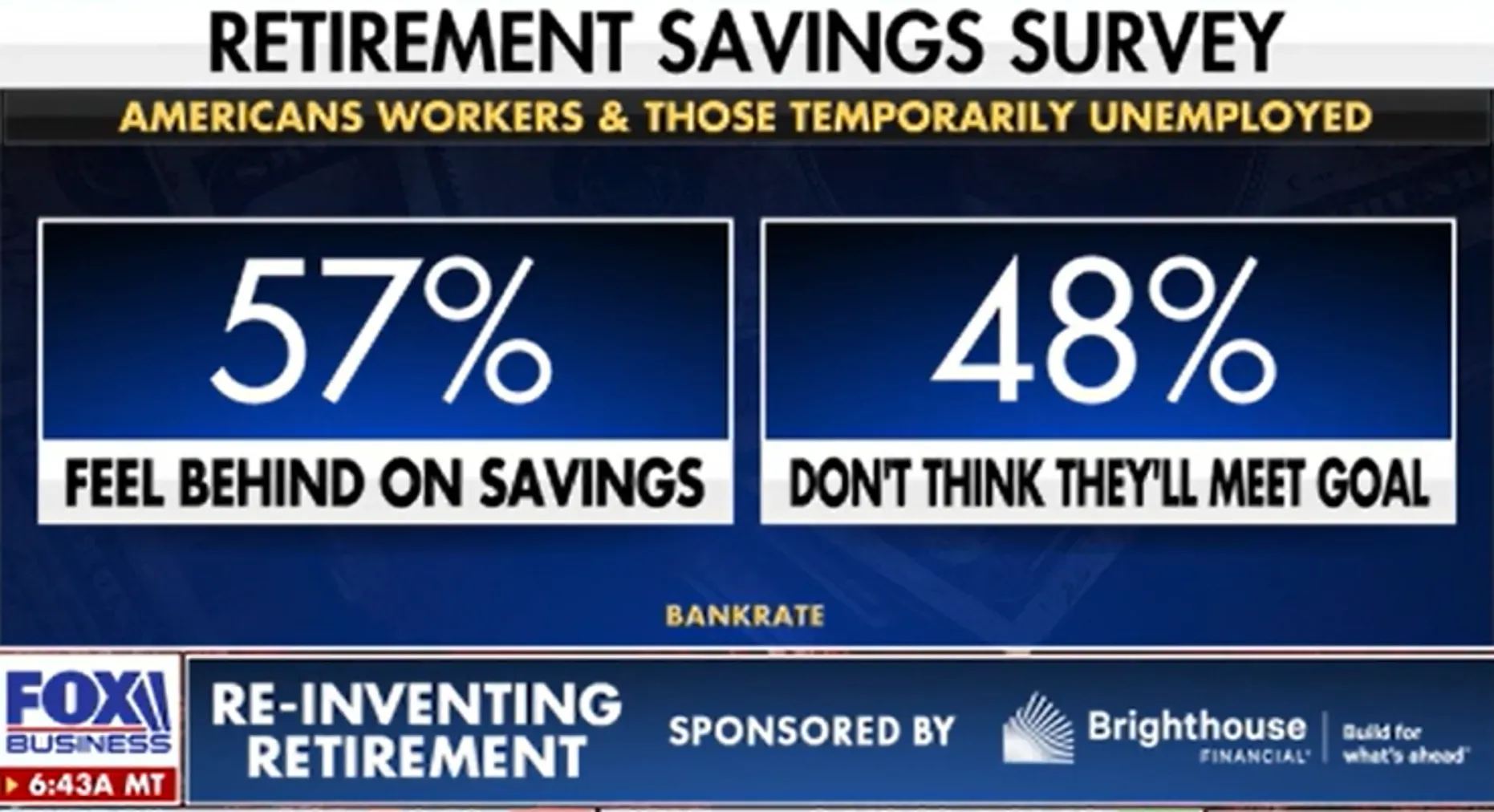
Americans owe more on credit cards than they have in their retirements savings
According to a new survey from Bankrate, 57% of American workers feel behind on their savings and 48% of those polled don't think they will meet their personal retirement goal. | Fox News
A growing retirement savings crisis is looming in America, as highlighted by personal finance expert George Kamel. More than half of Americans are behind on their retirement savings, and 37% owe more on credit cards than they've saved for retirement. Kamel warns that this is particularly concerning for Generation X, who say they’ll need around $1.5 million to retire comfortably, yet the median 401(k) balance is just $56,000.
Kamel stresses that investing is key to addressing this issue. Without taking steps to invest, individuals risk having no money for retirement. However, younger generations are growing increasingly skeptical about their financial futures, particularly when it comes to homeownership and long-term wealth building. While they want quick returns, Kamel advises a patient, strategic approach—tackling debt first, then investing consistently over time.
To further diversify retirement strategies, precious metals like gold and silver can provide a valuable addition to traditional portfolios. In times of economic uncertainty, these assets tend to hold their value, offering a hedge against inflation and market volatility. Adding gold and silver can provide stability and long-term security, complementing other investments as part of a diversified financial plan.
To Read More:
https://www.foxbusiness.com/media/avoidable-spending-habit-creating-retirement-crisis-financial-expert-warns
Berkshire slashes Bank of America stake
Warren Buffett walks the floor ahead of the Berkshire Hathaway Annual Shareholders Meeting in Omaha, Nebraska on May 3, 2024. David A. Grogen | CNBC
Warren Buffett's Berkshire Hathaway has reduced its stake in Bank of America (BofA) to below 10%, selling over 9.5 million shares between mid-July and October. This move means Berkshire is no longer required to disclose future transactions involving BofA in real time. Despite the sales, BofA’s stock has risen slightly, supported by the bank’s own repurchasing activities.
Buffett has a long history with BofA, having initially invested $5 billion in 2011 to stabilize the bank after the subprime mortgage crisis. Over the years, Berkshire added significantly to its holdings. However, Buffett has become more cautious about the banking sector, reducing his investments in major banks like JPMorgan, Wells Fargo, and Goldman Sachs due to concerns over the stability of deposits and changing market dynamics, particularly following the financial crises of 2008 and 2023.
In light of Buffett’s cautious approach toward the banking industry, investors may consider diversifying their portfolios beyond traditional equities. Precious metals like gold and silver can offer stability, especially during periods of economic uncertainty and financial sector volatility. Gold and silver tend to hold their value when confidence in the banking system wanes, making them a valuable hedge against market disruptions and a prudent addition to a diversified investment strategy.
To Read More:
https://www.cnbc.com/2024/10/10/berkshire-slashes-bank-of-america-stake-to-under-10percent.html
Silver’s Role in the EV Revolution and Growing Demand
Amid recent market volatility, gold has steadily climbed to new records, surpassing $2,500 an ounce. Silver, typically following gold's trends, has not matched gold’s record-setting pace, currently trading at around $29.40 an ounce. However, silver has recently outperformed gold over the past five sessions, driven by growing interest in its role in emerging technologies.
Retired investment professional Kevin Bambrough recently highlighted Samsung’s breakthrough solid-state battery technology, which uses a silver-carbon composite. This innovation could significantly increase silver demand. Bambrough estimates that Samsung's batteries, with a 600-mile range, 20-year lifespan, and 9-minute charge time, could require up to 1 kilogram of silver per electric vehicle (EV).
If just 20% of global car production adopts this technology, silver demand could surge by 16,000 metric tons annually—more than half of the current global silver production. The silver market, already in deficit due to rising demand from the solar industry, could tighten further, pushing prices higher. Bambrough predicts that silver could reach an all-time inflation-adjusted high of $200 per ounce within the next 10 to 15 years.
With the increasing integration of silver in key industries like EVs and solar energy, investors should watch for further tightening in the silver market, making it a prime candidate for portfolio diversification and future growth.
To Read More:
https://www.marketwatch.com/story/new-samsung-ev-battery-technology-has-captivated-silver-bulls-heres-the-argument-a7db1a66
Silver Market Faces Critical Supply-Demand Imbalance
The silver market is experiencing a significant and growing supply-demand imbalance, making now the time for investors to consider entering this precious metals arena. Demand for silver, particularly driven by industrial applications in the solar energy sector, has skyrocketed, leading to substantial supply shortfalls.
Soaring Demand for Silver
In recent years, silver demand has surged, especially in renewable energy technologies. The solar energy sector alone is a major contributor, utilizing silver in photovoltaic cells to harness solar power. As global initiatives to shift towards renewable energy intensify, the need for silver is projected to increase even further. Additionally, silver’s applications in electronics and battery technology continue to expand, compounding the urgency for securing supply.
Persistent Supply Shortfalls
The Silver Institute has reported that the silver market has been in a structural deficit for three consecutive years. In 2023, this deficit reached 184.3 million ounces, and projections indicate an even larger shortfall of approximately 215 million ounces in 2024—potentially the second-largest deficit on record. This stark imbalance highlights the challenges ahead in meeting surging demand with insufficient supply.
Challenges in Mining Production
Despite rising silver prices, which currently exceed $31 an ounce, silver mine production has failed to recover since peaking at 900.1 million ounces in 2016. The decline is alarming, with projections estimating mine output will be 62.8 million ounces lower than that peak, representing a 7% decrease.
One key factor in this situation is that over half of silver production comes as a byproduct of mining operations focused on base metals like copper, lead, and zinc. This dynamic restricts the ability of silver to respond independently to price changes, as the economics of these base metals take precedence.
Economic Pressures on Miners
Silver miners face significant economic challenges that further constrain supply. Rising operational costs have outpaced revenue growth, leaving many mining companies with little to no improvement in cash flow. Additionally, declining ore grades—down by about 22% since 2016—mean that silver prices must rise significantly to maintain margins.
As production costs continue to escalate, miners are forced to make difficult decisions regarding capital expenditures. Many are currently experiencing negative cash flow, complicating their ability to invest in new projects that could alleviate supply issues.
Long-Term Recovery Challenges
Even if mining companies allocate resources to develop new silver sources, it typically takes years for these efforts to yield significant production increases. Experts forecast that new mining operations are unlikely to balance current deficits in the short to medium term. Instead, the market will need to rely on recycling and existing above-ground stocks to meet the ongoing supply shortage.
Future Price Projections
Despite these challenges, Metals Focus anticipates record silver prices over the next five years. However, the modest growth in mine supply means that the market will remain constrained, making an investment in silver particularly attractive.
The Urgency for Investors
Given the persistent supply shortages and increasing demand, now is the critical moment to invest in precious metals, especially silver. With the potential for significant price increases on the horizon, acting swiftly allows investors to capitalize on the current market dynamics before they escalate. Secure your position in silver today to take advantage of this unique opportunity before the market reacts and prices surge even higher!
Recent Buffett Indicator Overview
The Buffett Indicator (aka, Buffett Index, or Buffett Ratio) is the ratio of the total United States stock market to GDP. As of August 31, 2024 the ratio values are:
Total US Stock Market Value = $59.71T
Annualized GDP = $28.56T
Buffett Indicator: $59.71T/$28.56T = 209%
This ratio fluctuates over time since the value of the stock market can be very volatile, but GDP tends to grow much more predictably. The current ratio of 209% is approximately 67.57% (or about 2.2 standard deviations) above the historical trend line, suggesting that the stock market is Strongly Overvalued relative to GDP.
Why Does it Matter?
The Buffett Indicator expresses the value of the US stock market in terms of the size of the US economy. If the stock market value is growing much faster than the actual economy, then it may be in a bubble.
To Read More:
https://www.currentmarketvaluation.com/models/buffett-indicator.php
Brace For Crash And Trillions Wiped Out With Fed Rate Cut
According to Forbes, researchers are currently estimating a 60% probability of a 50 basis point (bps) rate cut by the Federal Reserve. However, they suggest that a 25 bps cut is more likely, raising concerns about potential market volatility. If the Fed chooses a smaller cut without reassuring comments from Chair Powell, significant market declines could follow, potentially exceeding the $2 trillion drop seen in early August. High-growth stocks like Nvidia may experience 10-20% declines, while small-cap stocks could be particularly vulnerable due to their reliance on short-term financing. Additionally, negative jobless claims and stagnant inflation may heighten recession fears among investors. Last month, the S&P 500 saw significant volatility, with major declines in tech stocks contributing to an overall challenging market environment. Given these uncertainties, diversification into precious metals may be of interest to investors seeking a hedge against inflation and market fluctuations.
To Read More:
https://www.forbes.com/sites/greatspeculations/2024/09/17/brace-for-crash-and-trillions-wiped-out-with-fed-rate-cut/
Japan’s $1.1 Trillion Stock Meltdown Rewrote the Record Books
Japan's recent stock market collapse was historic, with the Topix and Nikkei 225 indexes plummeting 12% on Monday, marking their worst single-day drops since the 1987 Black Monday crash. Over three days, these indexes fell 20%, the steepest decline ever recorded, before a dramatic 10% recovery on Tuesday, reminiscent of the 2008 global financial crisis. The volatility triggered ten circuit breakers on stock futures, halting trading multiple times on Monday, and led to record trading volumes, highlighting the extreme market turmoil and investor panic.
Investing in gold and silver is considered a potential hedge against economic downturns because these precious metals tend to retain or even increase in value during times of financial instability, providing a safe haven for investors when traditional assets like stocks and bonds are underperforming. Let Red State help you get started today!
Global stock market meltdown as fears grow US economy will 'collapse'
Global stock markets experienced a sharp decline on Friday, with the S&P 500 dropping 2.5%, the Dow Jones falling 2.4%, and the tech-heavy Nasdaq losing 3.2%. This sell-off was triggered by a disappointing U.S. jobs report, which showed the highest unemployment rate since October 2021, sparking fears of a recession. The turmoil extended to international markets, with Japan's Nikkei 225 suffering a 5.8% drop, and European indexes also falling significantly. The situation has led to speculation that the Federal Reserve may need to cut interest rates more aggressively to prevent a deeper economic downturn. In times of economic uncertainty and market volatility like this, investing in precious metals such as gold and silver can be a prudent decision, as they often retain value and act as a safe haven for investors.
To Read More:
https://www.dailymail.co.uk/yourmoney/401k/article-13702421/global-stocks-meltdown-jobs-unemployment.html
Warren Buffett’s Berkshire Hathaway cuts stake in Apple by nearly 50%
Warren Buffett's Berkshire Hathaway significantly reduced its stake in Apple, cutting it by nearly 50%, from 790 million shares to 400 million, according to its Q2 earnings report. This move is notable given Buffett's typical long-term holding strategy. In the second quarter, Berkshire Hathaway sold off $75.5 billion in stock, including a reduction in its stake in Bank of America, now valued at $41.1 billion. The company's earnings report revealed that 72% of Berkshire's total fair value is concentrated in five major companies: American Express ($35.1 billion), Apple ($84.2 billion), Bank of America ($41.1 billion), Coca-Cola ($25.5 billion), and Chevron ($18.6 billion).
To Read More:
https://www.cnn.com/2024/08/03/business/berkshire-hathaway-apple-stock/index.html
5 labor-market indicators that show the economy is hurtling toward recession
The US labor market shows resilience in headline figures, with 199,000 jobs added in November and a drop in the unemployment rate to 3.7%, despite elevated interest rates. However, Jon Wolfenbarger, founder of BullAndBearProfits.com, identifies five indicators suggesting underlying weaknesses. The three-month moving average of the unemployment rate is trending upward, reaching 0.3 percentage points, approaching the 0.5-point threshold historically signaling recession. Temporary employment growth is negative, mirroring levels at the start of previous recessions, and permanent job losses have surged over 20% year-over-year. The trucking industry's job growth and declining job openings add to concerns. Wolfenbarger predicts a substantial recession, foreseeing a 61.8% drop in the S&P 500, citing high valuations. While his view is an outlier, differing opinions on the labor market persist, with some anticipating a soft landing and others, like economist Anna Wong, predicting continued weakening. Amid an aggressive tightening monetary policy, uncertainty looms over the US economy's fate, with conflicting data signaling potential challenges for stocks ahead.
This is why we believe people who are investigating ways to protect their retirement should look into the benefits of a gold IRA and how Red State Gold can help you to accomplish your goals.
To Read More:
https://www.businessinsider.com/stock-market-crash-recession-outlook-indicators-sp500-unemployment-rate-wolfenbarger-2023-12
Stocks are overvalued and a recession is almost certain, top economist David Rosenberg says
President of Rosenberg Research and a veteran economist, has cautioned that investors may be celebrating too soon after the Dow Jones Industrial Average reached a record high. Despite Federal Reserve Chair Jerome Powell's positive outlook, Rosenberg believes the Fed's growth projections indicate overpriced stocks and a looming recession. He questions why the stock market anticipates a 10% rise in corporate earnings for the next year when the Fed only expects 3.8% nominal economic growth in 2024.
Rosenberg emphasizes that equity valuations currently show no embedded recession risk, stating that stock investors are overly optimistic. He also points out that the Fed's forecast of slower GDP growth in the coming year implies a 90% probability of recession. Rosenberg's team predicts a significant drop in inflation below 1%, making achieving 3.8% nominal growth challenging, with 2% being more realistic.
Considering monetary policy lags and the withdrawal of fiscal stimulus, Rosenberg suggests that real GDP growth in 2024 might be no better than +1.0%, possibly even zero, a scenario seen in past recession years such as 1949, 1954, 1958, 2008, and 2009.
This is why we believe people who are investigating ways to protect their retirement should look into the benefits of a gold IRA and how Red State Gold can help you to accomplish your goals.
Gold's surge signals rally to new all-time high underway, strategist says
Gold is experiencing an upward trend, surpassing $2,000 per ounce and prompting predictions of a rally to a new all-time high. Futures are currently at $2,013 per ounce, marking a six-month high and a two-week consecutive increase. Analysts, including Mark Newton of Fundstrat, see this as evidence of a rally toward a new peak, with $2,050 considered a breakout level for momentum. Newton has a technical target of $2,500 per ounce, citing factors such as falling real rates, rising cycles, and geopolitical tensions.
Gold's status as a safe-haven asset is contributing to its surge, particularly amid escalating geopolitical tensions in the Middle East following the recent attack by Hamas on Israel. Additionally, anticipation of the Federal Reserve's halt to the tightening cycle is attracting buyers, as the speculation that the Fed is done raising interest rates has lowered longer-term Treasury rates. A declining 10-year Treasury yield makes gold more appealing to investors than bonds. Central banks, especially China, Poland, and Singapore, have been significant gold buyers, with global official gold reserves increasing by 120% quarter over quarter.
This is why we believe people who are investigating ways to protect their retirement should look into the benefits of a gold IRA and how Red State Gold can help you to accomplish your goals.
To Read More:
https://finance.yahoo.com/news/golds-surge-signals-rally-to-new-all-time-high-underway-strategist-says-193356999.html
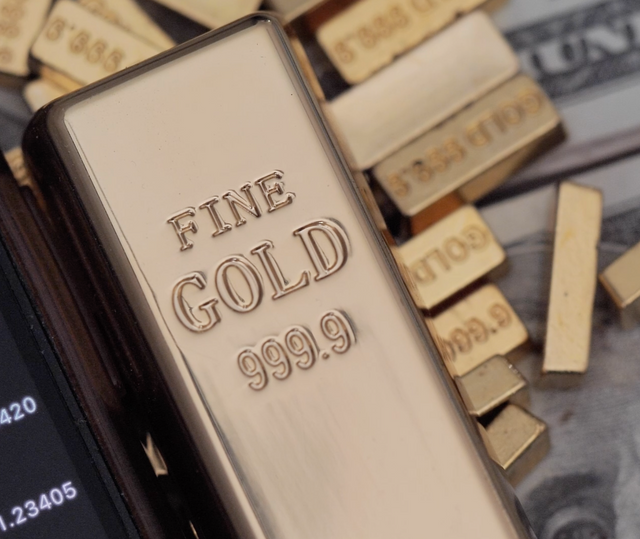
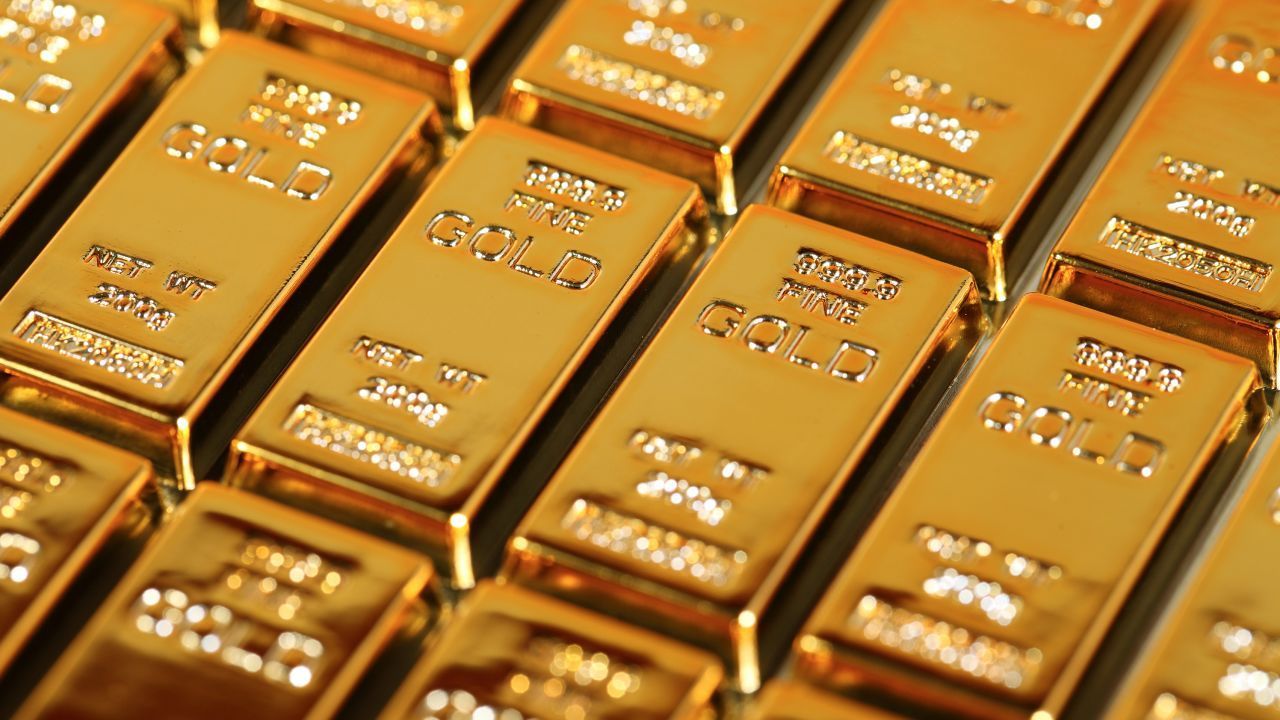
Contact us
corporate@redstategoldgroup.com
FAX: 800-918-4350
9701 Wilshire Blvd. 10th Floor
Beverly Hills, CA 90212
HELPFUL LINKS
©2024 RED STATE GOLD
Information found within Red State Gold sites and publications is intended for general educational purposes and should not be taken as investment advice.
Red State Gold does not provide financial, legal, tax advice, or retirement-specific recommendations.

